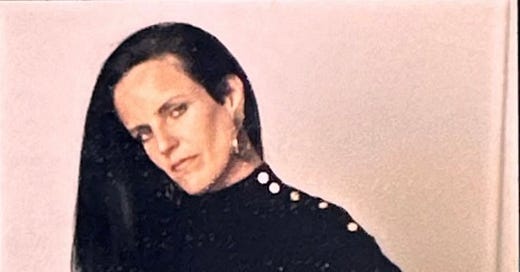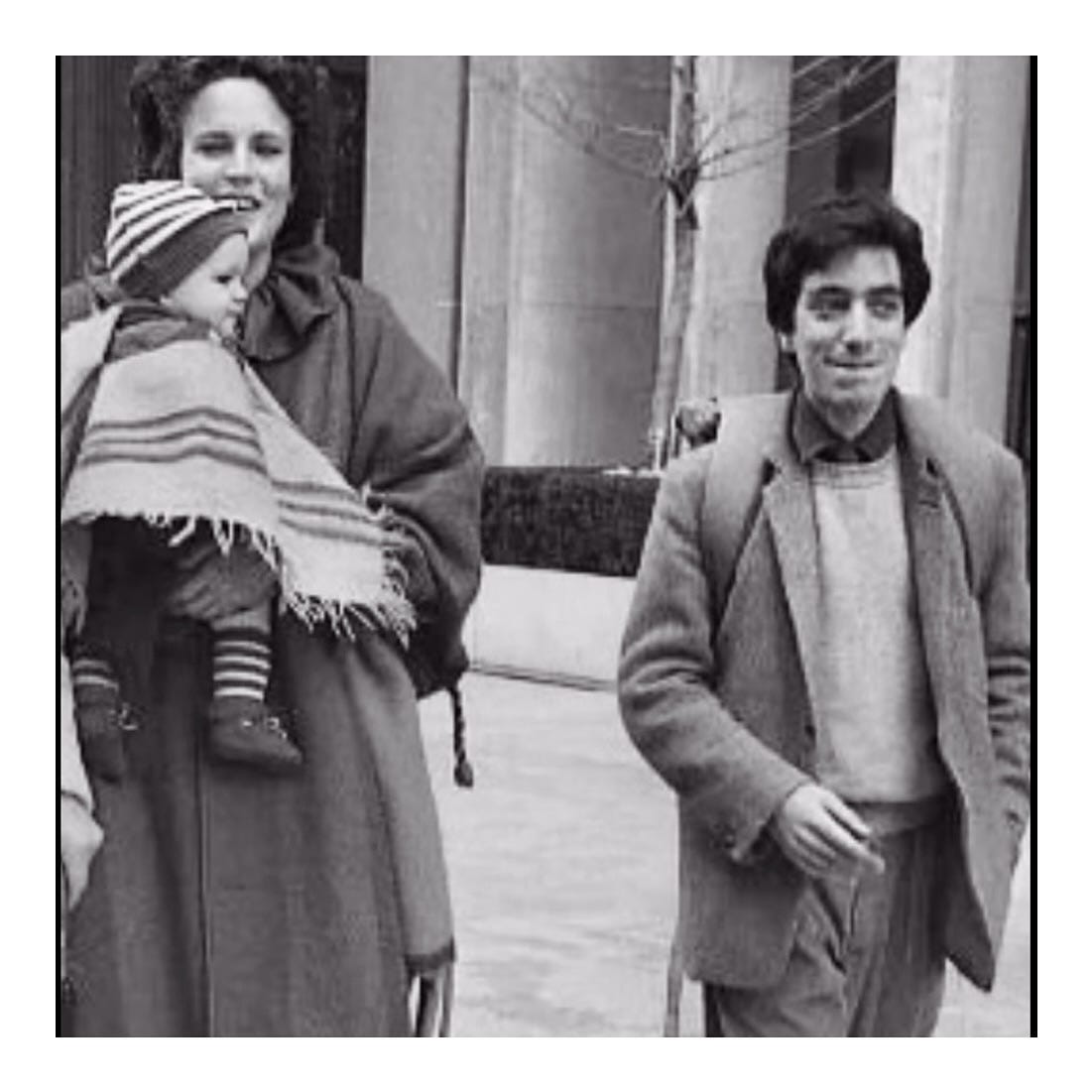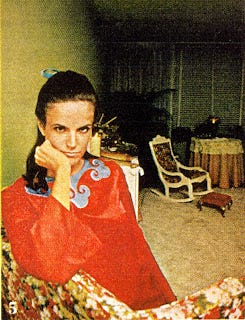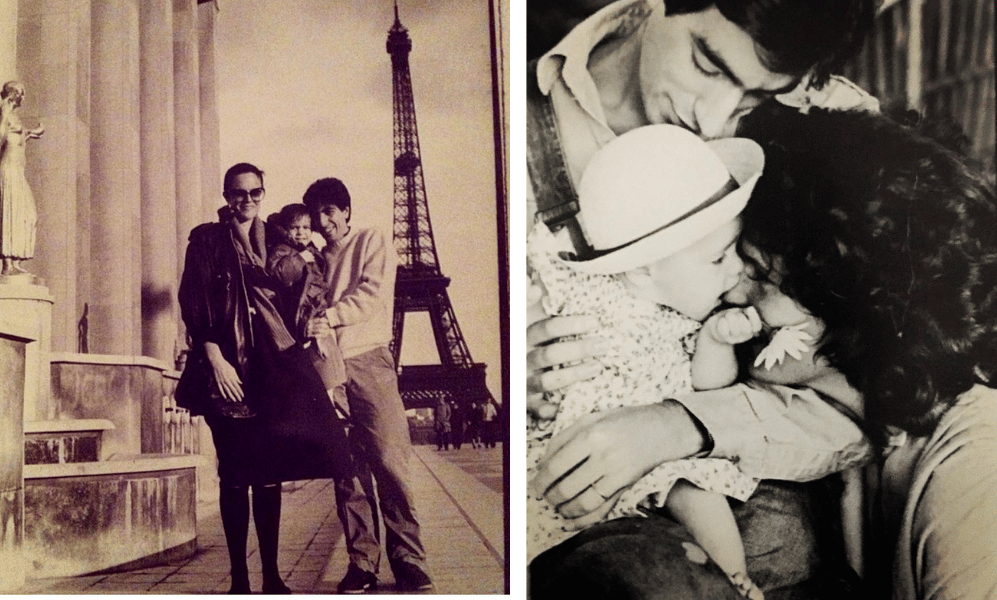Cayli Cavaco Reck’s life story is a Netflix limited series waiting to happen.
Along with her dad, famed stylist Paul Cavaco, Cayli recently launched the podcast UNDER THE COVER (full disclosure: our sister company Audily does the production on the show). The premise is to go under the cover of “iconic photo shoots, music videos and fashion shows,” to talk about the designer, the model, the creatives that were, you guessed it, “under the cover.”
Episode One features supermodel and entrepreneur Cindy Crawford opening up about her life on and off the runway, including wild moments like when she refused to let the late make-up artist Kevyn Aucoin pull back her face with special “face lift” make-up tape: “I mean, I was in my twenties!” In Episode Two, designer Michael Kors remembers how he and Paul created a glamorous, faux Capri backdrop in buggy Long Beach, California. “It was like we were wading into the Hudson,” says Kors. “But I kept screaming at the model, ‘Remember! You're in Capri after lunch!’ ”
Episode Three features editor Linda Wells dishing on the early days of Allure Magazine. In between stories about Taylor Swift and Angelina Jolie, Wells remembers the magazine’s near budget-disaster when shooting Sharon Stone for its first celebrity cover. The stylist showed up with a gorgeous couture dress by John Galliano and Stone looks at the stylist and reminds them of her rule. “I wear it, I keep it.” (They ended up shooting her in the hotel bathrobe).
But we’re here to talk about a Rolex, specifically one that belonged to Cayli’s mother, Kezia Keeble.
Kezia, an editor at Vogue in 1966 under Diana Vreeland, was the youngest ever at age 24. After Vogue, she became the fashion editor at Esquire and later, co-founded the PR agency Keeble and Cavaco with Cayli’s dad Paul. To say that Kezia had presence is an understatement. At 5’10”, she towered over Paul and this picture of the couple captures just a slice of her energy.
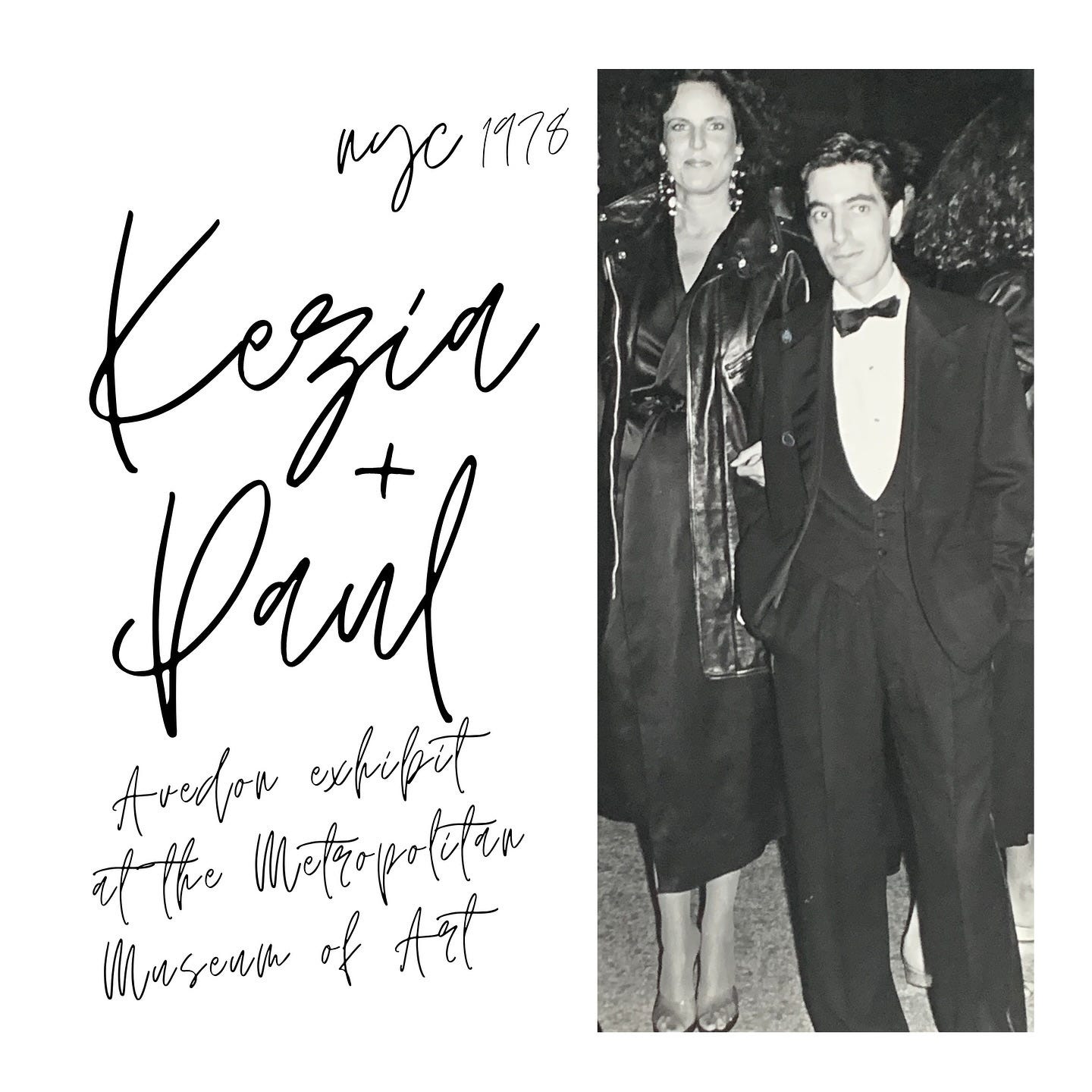
Fashion is Cayli’s birthright. At six months old, she attended her first fashion show in Paris and when crawling around the floor at her parents’ offices, she too wore the agency uniform: all black. She always seemed to be integrated into her parents’ lives. In a 1980 New York Times piece about their apartment design, Paul Cavaco explained how they managed their business and personal lives in a two-bedroom westside rental. “We knew that the decision to have a child was a decision to work with her also. Everyone in the fashion industry knows her now and she is not intimidated by our work situations.” Kezia added: “We are all together, getting away from the stereotype of the woman who stays at home with the kids and the man who goes to the office.” On a family outing, the threesome were captured by legendary photographer Bill Cunningham for a New York Times piece about bringing babies to fashion shows.
Pushing boundaries was never an intentional act because for Kezia and Paul, boundaries simply didn’t exist.
By the time Cayli was eleven, her mom’s weekday wardrobe was almost exclusively made up of Chanel suits. Kezia didn’t wear jewelry besides her wedding ring so she wanted a watch that would match those iconic gold Chanel buttons.
I think she had a relationship to beautiful things and rare things and so even if she was going to do something like everyone else, it would be different. She had a tiny wrist so the size of the face is very rare because it’s smaller…it’s somewhere between a men and women’s watch. It wasn’t custom but she had to chase it down.
Cayli went with her to Tourneau on Madison Avenue to try on watches. She uses the word “fittings” when describing these visits; the watch was treated like a couture dress.
She would try them on and look at different possibilities (size of the face, what the band would be made of…diamonds on the bezel, the balance of diamonds in either location). It’s a fancy watch, it’s a big deal. Especially for a woman. It’s the type of watch that’s a “showstopper.”
Kezia was married to Paul Cavaco for almost a decade. When they divorced in 1985, they continued to co-parent and work together. Cayli’s parents lived in the same Manhattan building, one floor apart. Kezia later married John Duka, a style reporter for The New York Times. At that point, Keeble and Cavaco became Keeble, Cavaco, and Duka (KCD). That marriage would end less than five years later when John Duka died in 1989 at age 39 from abdominal surgery complications. He had been diagnosed with AIDS a year earlier.
Kezia Keeble died of breast cancer one year after John. She was 48. Cayli was 13.
To me this watch is so significant because we didn’t have enough time together. That’s the biggest thing. She was super inspiring to everybody she came across and very sophisticated and very adult and always spoke to me like I was an adult…like I would be someone powerful and do something important. She spoke to everybody equally and it didn’t matter who they were or what they did for a living….and she really championed people. That was not unique to me.
When googling Kezia Keeble, the hits keep coming: essays, personal reflections, articles, and obituaries pop up from around the world. Cayli seems well aware.
People are fascinated with her. She met John [Duka] through the industry and in some ways it’s almost easier to understand it [their relationship] through today’s lens because the world has become so varied…. But at the time I think and I only see it now, I think there is sometimes when people read about them or learn about them, there’s a schaudenfreude which sorta means to me that people see them as falling from grace.
There is a certain je ne sais quoi in Kezia’s photographs. She is impossible to pin down and her face rarely betrays a clear emotion.
I found a random blog entry written by a Massachusetts couple who decided to name their own daughter Kezia after seeing a picture of Keeble in a 1965 edition of Glamour Magazine.
Bob Bacon remembers lying in bed and running through names with his wife Sandy. “Kezia Ann, Kezia Elizabeth . . . the baby gives its first real kick from inside the womb. It will be Kezia Elizabeth.”
Although Cayli inherited the watch when her mother died, she didn’t wear it for years. “It felt too sophisticated for someone so young.”
Her mother’s death was formative and while she is pretty open about its impact on her world, it’s impossible to capture a meaningful sense of the loss. Despite this heavy helping of “trauma soup,” as Cayli calls it, she has found her way both professionally and personally. After college, Cayli worked in fashion and magazines and in 2016, launched Knockout Beauty as a pop-up store in the Hamptons. It has since become a brick and mortar with locations across the country. Cayli acknowledges that despite this success, she doesn’t feel like she’s landed professionally, something she apparently shares with her mother; “as a person, I don’t think she ever felt that she had arrived.”
When I ask Cayli again about this watch she says that as she has gotten older, it’s become her primary piece of jewelry. It seems to fit her better.
“Now, no one asks if it belongs to someone else.”
Thanks so much to Cayli for sharing her story with me. To listen to Paul and Cayli’s new show, click HERE.
For more on Knockout Beauty, click HERE.
Follow Cayli on Instagram HERE and follow the podcast insta HERE.
Do you have a jewelry story to share? Don’t be shy, now.


